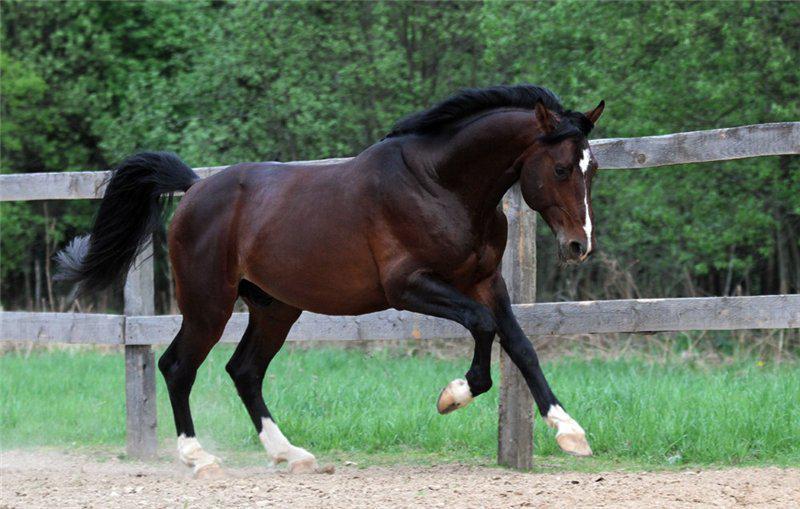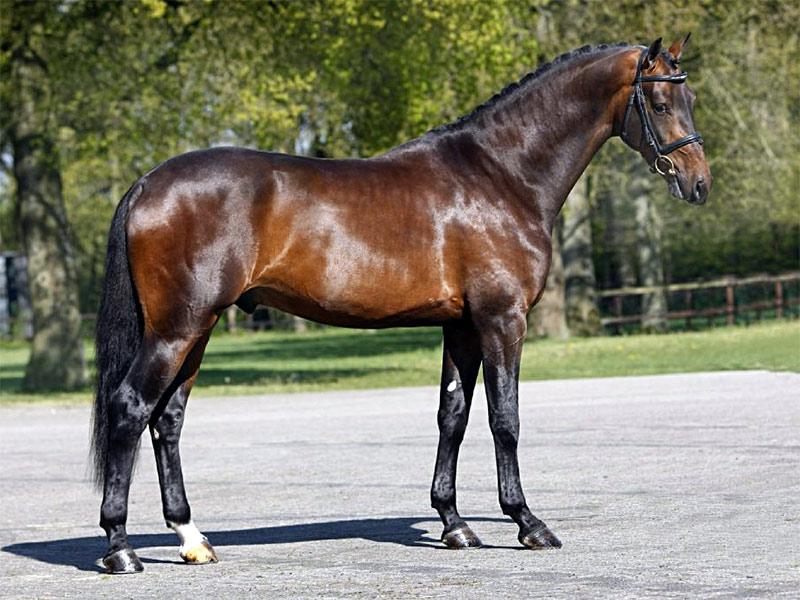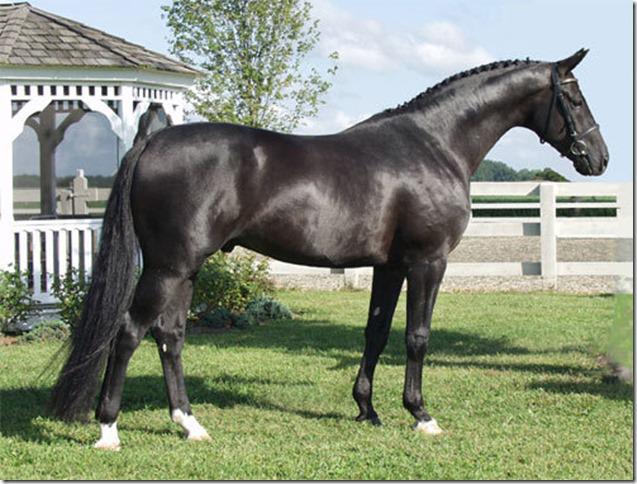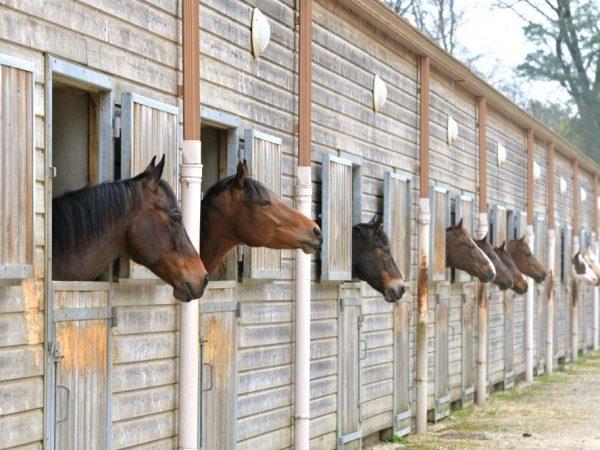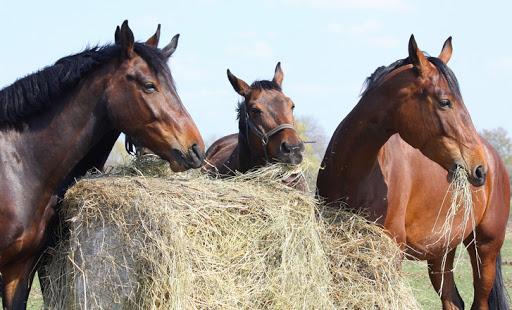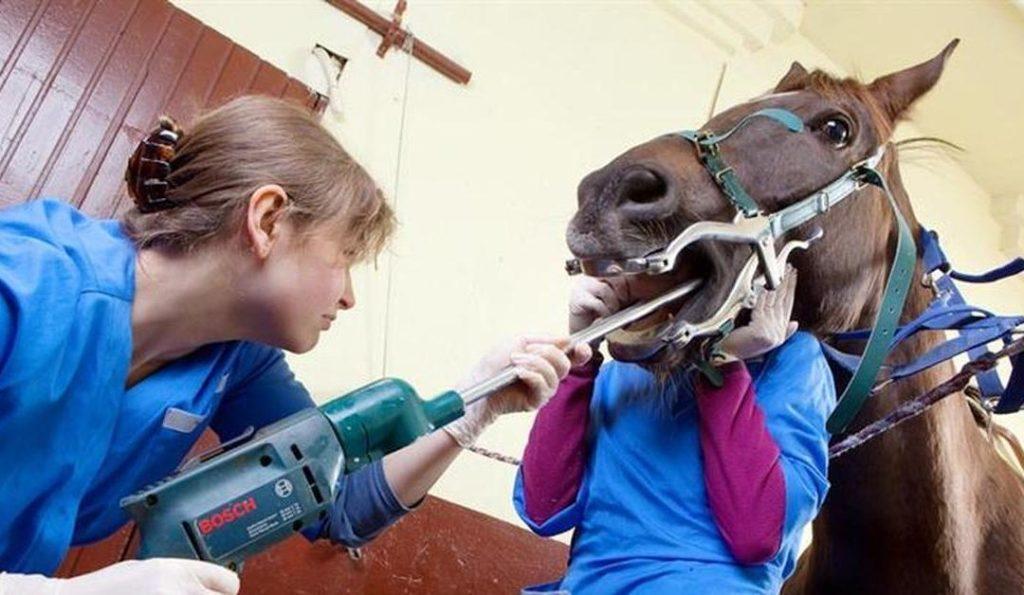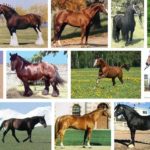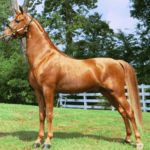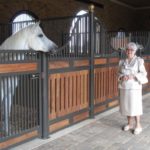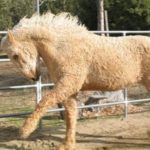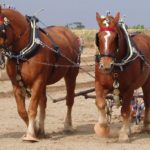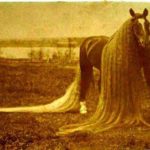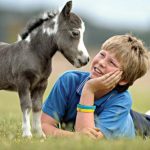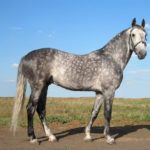The Hanoverian horse breed is characterized by specific features. These animals have a massive build and harmonious appearance. They have a calm disposition and can participate in various types of competitions. In order for these horses to be healthy and develop normally, it is recommended that they be provided with suitable housing conditions and a balanced diet.
- Historical reference
- Description and characteristics of the Hanoverian horse
- Appearance and physique
- Temperament and habits
- Productive qualities
- Advantages and disadvantages
- Maintenance and care
- Arrangement of the stables
- Diet
- Hygiene
- Breed reproduction
- Treatment and prevention of diseases
- Purpose, use and price
Historical reference
The history of this breed began a long time ago.The first mention of these animals was recorded back in 732. Then they were used as war horses. The second wave of popularity came in the eighteenth century. It was then that the British King George II, who at that time was the Elector of Hanover, created a stud farm for the development of horses.
For a long time this breed was classified as a draft breed. But after many crossings with other breeds, we managed to get a different result - a universal horse of large size. It was used for heavy work and riding.
Description and characteristics of the Hanoverian horse
Hanoverian horses are characterized by a number of features. These horses are distinguished by their attractive appearance and calm character.
Appearance and physique
Hanoverian horses have a massive body and reach a height of 1.6-1.75 meters. The animals are characterized by a long neck. Horses have a muscular body that extends into a rounded croup. Horses have slanted shoulders and muscular legs. They are distinguished by large joints and short metacarpus. The horses have a medium head and a straight profile. They are typically distinguished by large brown eyes and flared nostrils.
The norm for this breed is black, bay, and dark bay. There are also red horses in the population. Sometimes there are light spots or markings on the fur.
Temperament and habits
Horses of this breed have an excellent character. They are characterized by courage and pride. These are calm, balanced and good-natured animals. Individuals with an unbalanced psyche are not allowed for breeding.
Productive qualities
Hanoverian horses look elegant and are hard-working. They are characterized by grace. Therefore, these horses are considered one of the most popular breeds in the world.They are the best in Olympic sports. These animals can perform different tricks. In equestrian competitions they take part in the following disciplines:
- show jumping;
- dressage;
- triathlon.
This is a wonderful breed that is genetically oriented towards contact with people, which makes working with animals much easier.
Advantages and disadvantages
The main advantages of the breed include the following:
- calm behavior;
- gracefulness;
- excellent learning ability;
- presence of sports passion;
- beautiful appearance.
The only disadvantage is the impossibility of using it in the home. In addition, animals are quite expensive.
Maintenance and care
These animals require complete and high-quality care. In order for horses to develop normally and not get sick, you will have to spend a lot of money.
Arrangement of the stables
When arranging a stable, it is recommended to pay attention to the following elements:
- The stall must be free. It is recommended to make the walls from boards. It is worth making individual feeders and drinkers for each stall.
- The drinking bowl can be manual or automatic. In the first case, water should be brought in buckets, in the second, its level is constantly maintained in the system.
- The feeder should be made in the form of a tray into which food is poured. It is permissible to make 2 compartments to give the animals a variety of food. Trays are made of plastic, wood or iron.
- It is recommended to make the flooring from large sawdust. Fragments that are too small can enter the animal's respiratory system. The initial layer should be 10 centimeters thick. After that, every 2 days you should add an additional portion - 1 bag.
- In winter, the temperature in the stable can be slightly above 0 degrees. Animals tolerate mild frosts calmly only in the absence of sudden fluctuations and drafts.However, these are considered extreme conditions. It is best to maintain a temperature of +23 degrees in the stable.
- Lighting can be natural or artificial. In the second case, it is worth maintaining a level of 150-200 lux.
- It is imperative to provide ventilation in the stable. This will help get rid of the unpleasant odor.
Diet
The following products should be present in the animal's diet:
- Grass. It should make up 80% of the total food. If this is not possible, it is recommended to replace fresh greens with hay. For every 100 kilograms of animal weight, 2 kilograms of feed are used. Cereal hay can be given in its pure form. When choosing food, you should consider its quality.
- Cereals and legumes. Horses are allowed to be given a maximum of 4 kilograms of oats and barley per day. First they need to be processed. The amount of legumes reaches 2 kilograms.
- Bran. Horses should be given wheat. It is recommended to mix them with steamed grain. You should not give more than 2.5 kilograms of product per day.
- Fruits and vegetables. Horses like apples, watermelons, and root vegetables. It is important that the products are clean and fresh. For every 100 kilograms of weight, 4 kilograms of such food are allowed.
- Supplements You should definitely add biological substances to your food. This will help saturate the animal’s body with useful elements.
Horses have slow digestion. Initially, it is worth giving roughage, and grains only after half an hour. Then it is recommended to give the animal a couple of hours to rest. Horses should be fed three times a day. In the evening they are given maximum hay.
Hygiene
It is recommended to clean the horses as they become dirty. To do this, you should use a special brush. It is better to use it against hair growth.It is also permissible to use a damp cloth. After cleaning, the animal will have to be dried thoroughly.
Brushing horses is of no small importance. This helps avoid hair tangling. To comb your mane, you should use special combs and gloves.
In addition, it is recommended to regularly bathe the horse. To do this, use a hose and special detergents. It is important to make sure that the water pressure is not very intense. Otherwise, the animal may get scared. You should definitely take care of your hooves. They are allowed to be shoed, but this is not required. In any case, it is worth systematically cleaning the hooves of dirt.
Breed reproduction
Animal breeding is carried out by official organizations. In Russia, these include VNIIK. In Europe, horse breeding is carried out by the Hanoverian Breeding Union. However, there are different approaches to reproduction. Russian scientists are crossing 2 purebred Hanoverian individuals. The foal is then given breeding papers. He receives them regardless of compliance with existing standards. In Europe, breeding is carried out differently. It is permissible to cross Hanovers with other licensed breeds. If the foals meet the requirements, they are entered into the Hanoverian breed registry.
Treatment and prevention of diseases
It is important to closely monitor the health of animals. To do this, they are systematically shown to the veterinarian. This procedure is recommended to be carried out every six months. At the same time, it is worth monitoring your mental health. Horses that have any abnormalities are not allowed to breed, since with each generation the undesirable characteristics will only increase.
Purpose, use and price
Hanovers are actively used in all sports disciplines. They can perform complex tricks and participate in gaits. Thanks to their excellent physical characteristics, horses easily overcome obstacles and show their grace. At the same time, horses are quite expensive - about 3 thousand dollars. The Hanoverian horse breed has many advantages, which is why it is very popular among horse breeders. In order for horses to develop normally, they need to be provided with quality care.

